Luthier Neil Campbell shares how he crafted a violin in the style of the iconic instrument played by the legendary guitarist
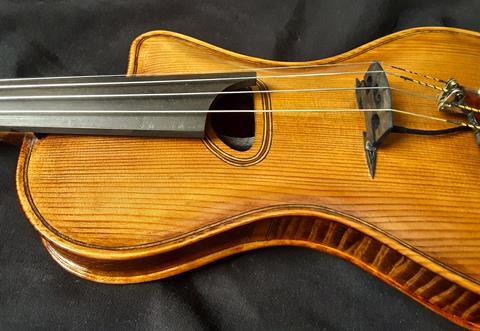
Discover more lutherie articles here
As a young guitar player, one of my favourite guitarists was Django Reinhardt. Django was a spectacular jazz guitar player who played alongside Stéphane Grappelli. Together, they made popular the ’Gypsy Jazz’ sound now played by jazz musicians throughout the world.
Django frequently played guitars designed and made by Maccaferri and Selmer. (see below). They were quite unique in appearance and in sound having a very short percussive note length.
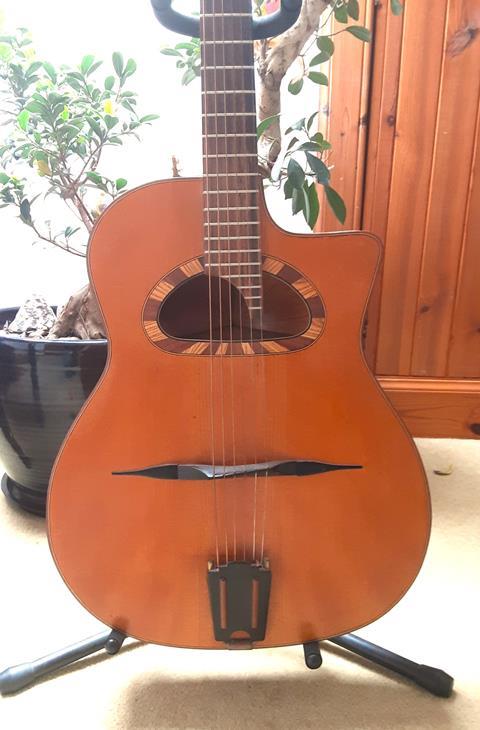
I was at the Sheraton Hotel Edinburgh recently listening to a band playing many of the old Django/Grappelli classics on period-style instruments and wondered, could I make a Maccaferri-style violin?
The first challenge was that in preparing plans I found that maintaining the standard string/stop lengths resulted in an ugly looking thing where the soundhole would have to be in the wrong place entirely, not underneath the fingerboard extension like the Maccaferri.
Lengthening the neck and slightly shortening the body was required and resulted in something more like what I wanted.
The construction
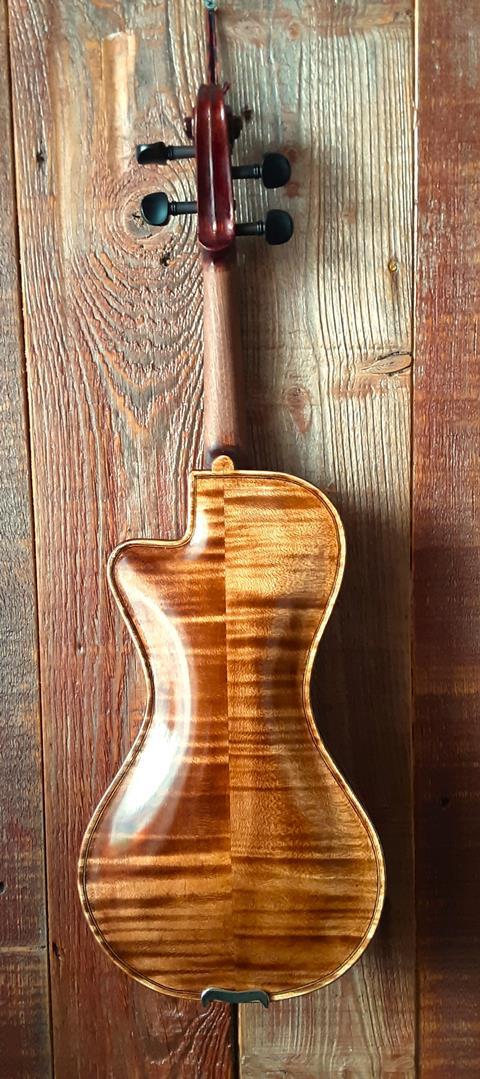
The back is made from flamed sycamore, sides - flamed sycamore, berberis and plane, The neck – bubinga, soundboard - red deal, tailpiece- flamed sycamore, nut & saddle – mammoth ivory, fingerboard and pegs ebony., tail pin berberis.
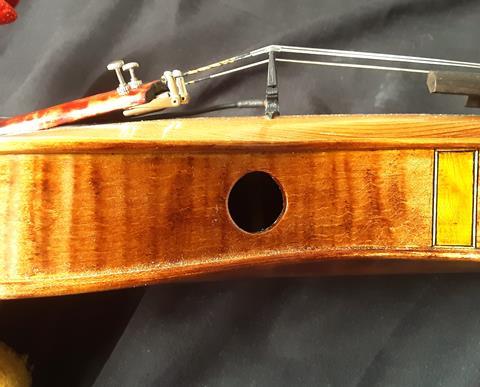
The soundpost is placed via a hole in the side, and the bass bar passes through the open part of the soundhole where I created a slight ‘U’ shape in the bar’s profile to set it back from the soundhole and stained it black to make it virtually invisible. The violin also has the little feet extensions known as the moustaches distinctive to the Maccaferri guitar. Other than that it’s completely ’normal.’
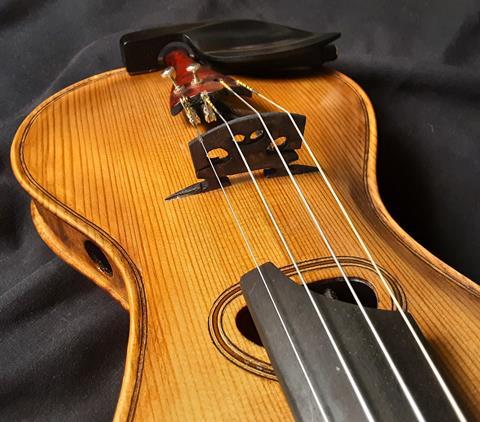
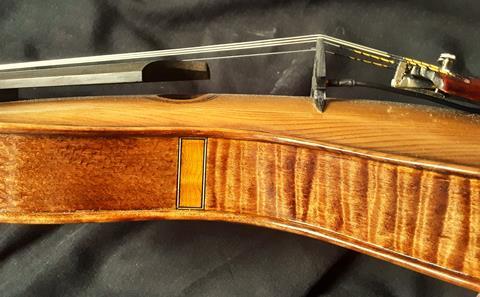
The sound
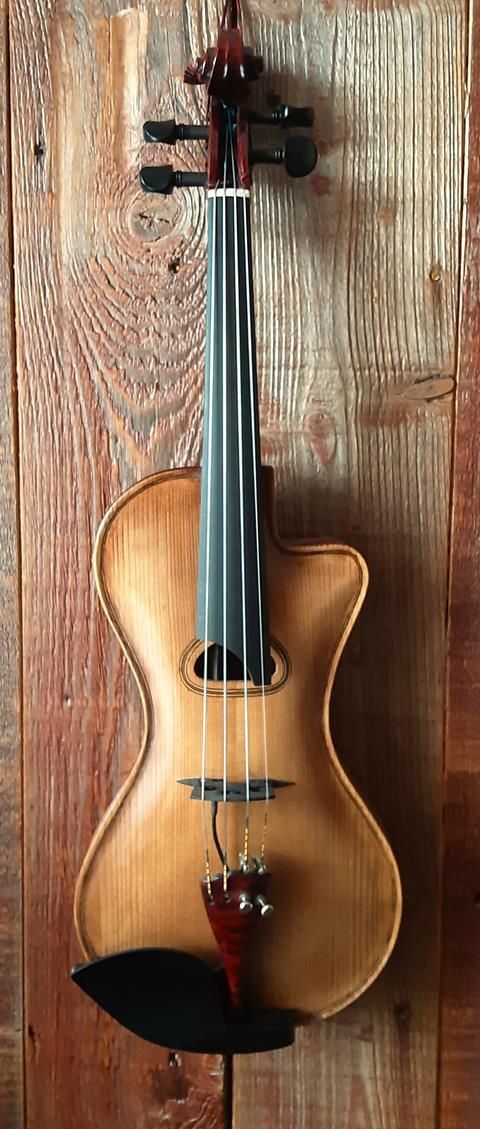
The instrument is designed as a semi-acoustic instrument and is fitted with a wonderful pickup from Skyinbow. The preamp is built into the chin-rest and is charged for about 16 hours by simply plugging in a PP3 battery for 10 minutes, after which it operates without an onboard battery. It can also use phantom power. Acoustically, the instrument is perfectly playable and of reasonable volume, but you can tell that the soundbox volume is reduced. Intonation-wise, I find it quite easy to adapt and deal with the longer neck. The cat may disagree.
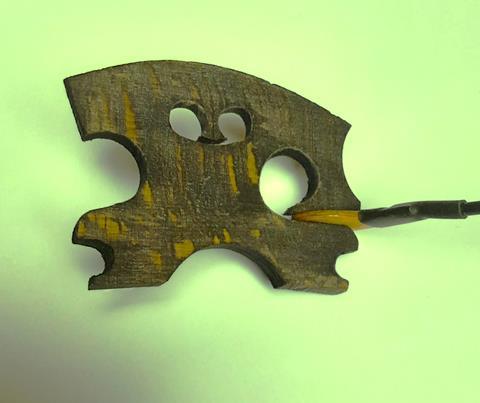
Another detail not fitted to the violin at present but is interchangeable is an experimental asymmetrical bridge (see above). It’s designed to be used with the Piezo pickups that fit in the bridge wing - my thinking being that by setting the fulcrum of the bridge off to the bass side slightly more range of vibration might be available for the Piezo disc. The bridge wing contact point is also belled out like an elephant leg to create a larger surface area. Initial results would suggest it’s as good as a standard bridge, in this pickup application. However, the Skyinbow pickup is so good I’ll save this alternative one for another project.
If you’d like more information on the violin or bridge please get in touch. I enjoy hearing from other makers and players: ncviolins@gmail.com
Read: Photo gallery: ‘The Painted Violin’ by Roger Hansell
Read: The Sound of Islay: the violin made from a whisky barrel
Read more lutherie articles here
An exclusive range of instrument making posters, books, calendars and information products published by and directly for sale from The Strad.
The Strad’s exclusive instrument posters, most with actual-size photos depicting every nuance of the instrument. Our posters are used by luthiers across the world as models for their own instruments, thanks to the detailed outlines and measurements on the back.
The number one source for a range of books covering making and stringed instruments with commentaries from today’s top instrument experts.
American collector David L. Fulton amassed one of the 20th century’s finest collections of stringed instruments. This year’s calendar pays tribute to some of these priceless treasures, including Yehudi Menuhin’s celebrated ‘Lord Wilton’ Guarneri, the Carlo Bergonzi once played by Fritz Kreisler, and four instruments by Antonio Stradivari.






































1 Readers' comment